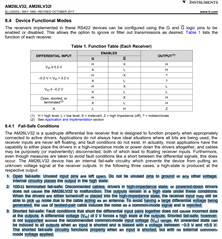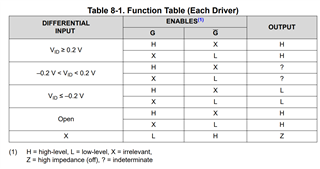Other Parts Discussed in Thread: AM26LV32,
Hi All,
I have a question about Fail-Safe.
Short Circuit, and Terminated Fail-Safe has been removed from the Revision Historynioite datasheet.

AM26LV32 has the following explanation, but is AM26LV32E only supported by Open Circuit Fail-Safe?

Please tell me the method of care when a terminating resistor is attached.
Best Regards,
Ishiwata



